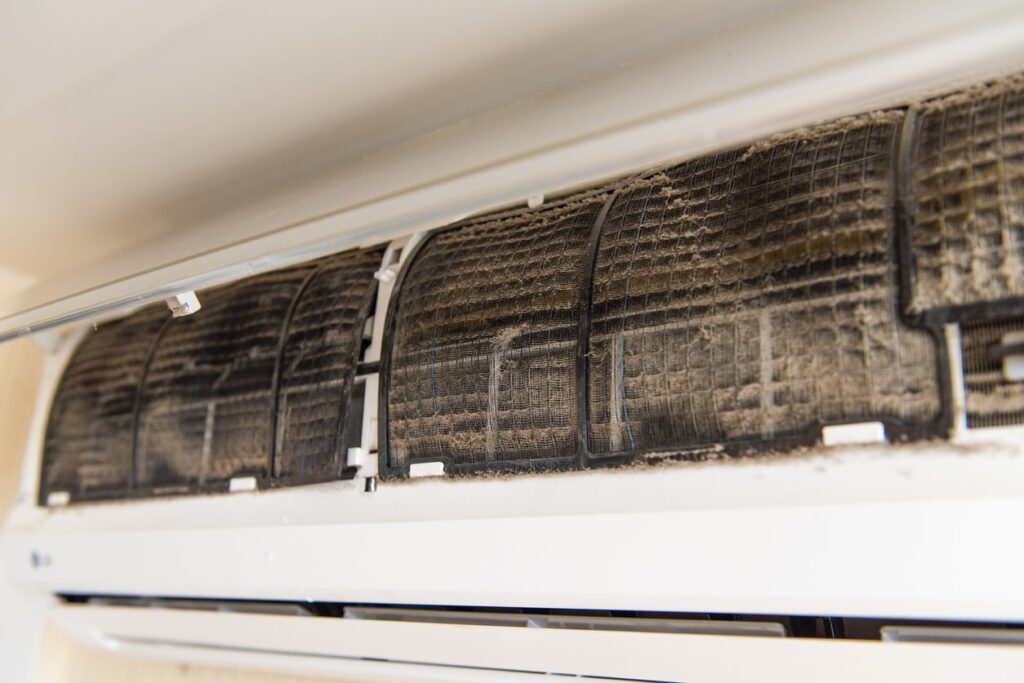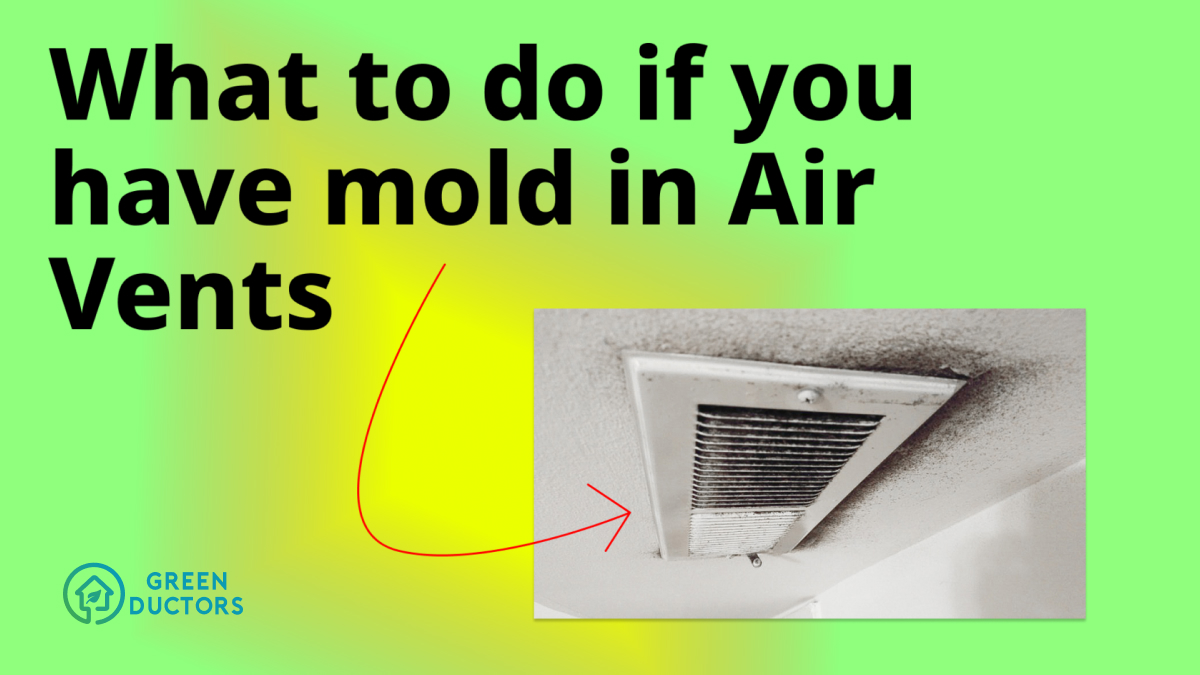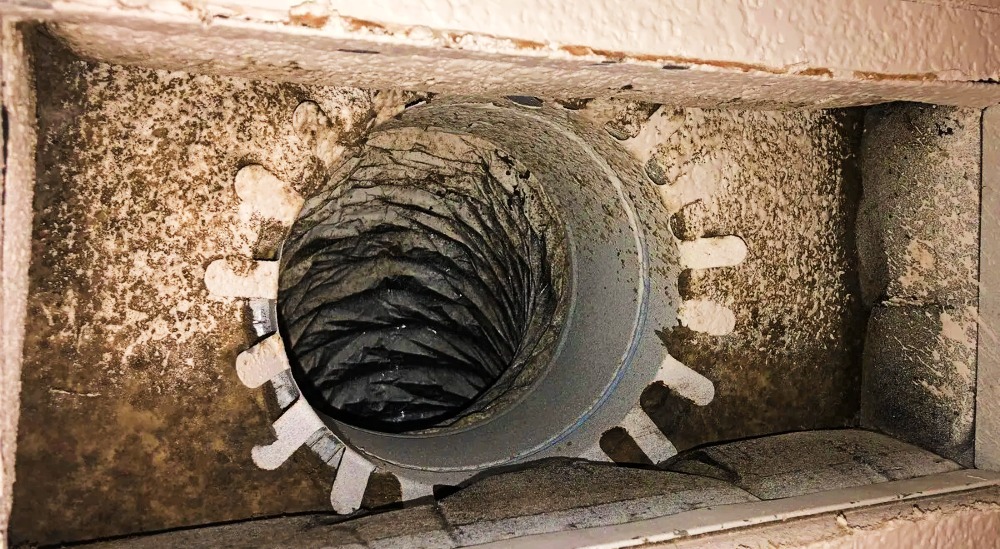Why Is There Mold In My Ac Vents

Mold in your air conditioning vents isn't just unsightly; it's a sign of underlying issues that can impact your health, your HVAC system's efficiency, and even the structural integrity of your home or building. Understanding the root causes and addressing them promptly is crucial. This article delves into the reasons behind mold growth in AC vents, prevention strategies, and the best course of action for remediation, catering to homeowners, HVAC professionals, and facility managers alike.
The Perfect Storm: Conditions Favoring Mold Growth
Mold thrives in dark, damp, and warm environments. Unfortunately, many HVAC systems inadvertently create these conditions, providing the ideal breeding ground for mold spores. Here's a breakdown of the contributing factors:
- Humidity: High humidity levels, particularly during summer months, provide the moisture mold needs to flourish. When warm, humid air passes over the AC's evaporator coil (the part that cools the air), condensation forms. This condensation can collect in the drain pan or within the ductwork, creating a constantly damp environment.
- Lack of Airflow: Stagnant air offers little resistance to mold growth. If airflow is restricted within the ductwork, moisture can linger, allowing mold to establish itself. This is especially true in areas with poor ventilation.
- Organic Material: Mold needs a food source. Dust, pollen, dead insects, and other organic debris that accumulate in your ductwork provide this sustenance. These materials, combined with moisture, create a veritable buffet for mold.
- Temperature Fluctuations: The constant cycling between cool and warm temperatures in your HVAC system can create condensation and fluctuating humidity levels, further encouraging mold growth.
- Leaky Ductwork: Leaks in ductwork allow unconditioned, often humid, air to enter the system. This increases humidity within the ductwork and can lead to condensation and mold growth.
Identifying the Culprit: Common Locations for Mold Growth
Mold can appear in various parts of your HVAC system, but some areas are more prone to it than others. Knowing where to look can help you pinpoint the source of the problem:
- Evaporator Coil: The evaporator coil is the primary location for condensation, making it a prime target for mold. Check for visible mold growth on the coil itself and in the surrounding area.
- Drain Pan: The drain pan collects condensation from the evaporator coil. If the drain line becomes clogged, the pan can overflow, leading to standing water and mold growth.
- Ductwork: Inspect the interior of your ductwork, especially near joints and seams. Look for dark spots, discoloration, or a musty odor. Flexible ducts are particularly susceptible to mold growth due to their ribbed design, which can trap moisture and debris.
- Air Vents and Registers: While mold on the vents themselves might be superficial, it often indicates a more significant problem within the ductwork.
- Air Filter: A dirty air filter restricts airflow and can contribute to moisture buildup in the system. Replace your air filter regularly to prevent this.
Health Hazards and System Efficiency: The Impact of Mold
The presence of mold in your AC vents isn't just a cosmetic issue; it can have serious consequences for your health and the performance of your HVAC system:
Health Concerns
Mold spores are allergenic and can trigger a range of health problems, including:
- Allergic Reactions: Symptoms may include sneezing, runny nose, itchy eyes, skin rashes, and difficulty breathing.
- Asthma Attacks: Mold can exacerbate asthma symptoms, leading to wheezing, coughing, and chest tightness.
- Respiratory Infections: In some cases, mold exposure can lead to more serious respiratory infections, particularly in individuals with weakened immune systems.
- Other Health Issues: Prolonged exposure to mold has been linked to fatigue, headaches, and other health problems.
System Inefficiency
Mold growth can also negatively impact the efficiency of your HVAC system:
- Restricted Airflow: Mold buildup in the ductwork can restrict airflow, forcing your system to work harder to maintain the desired temperature.
- Reduced Cooling Capacity: Mold on the evaporator coil can reduce its ability to transfer heat, leading to decreased cooling capacity.
- Increased Energy Consumption: A less efficient system consumes more energy, resulting in higher utility bills.
- System Damage: In severe cases, mold growth can damage HVAC components, leading to costly repairs or premature system failure.
Prevention is Key: Strategies to Keep Mold at Bay
Preventing mold growth is far more effective and cost-efficient than dealing with a full-blown infestation. Here are some proactive measures you can take:
- Regular Maintenance: Schedule regular maintenance checks with a qualified HVAC technician. They can inspect your system for potential problems, clean the evaporator coil and drain pan, and ensure proper airflow.
- Air Filter Replacement: Replace your air filter every 1-3 months, or more frequently if you have pets or allergies. Use a high-quality filter with a MERV rating (Minimum Efficiency Reporting Value) appropriate for your system and needs. A MERV rating of 8-11 is generally recommended for residential use.
- Maintain Proper Humidity: Use a dehumidifier to maintain indoor humidity levels below 60%, ideally between 30% and 50%. This is especially important during humid summer months.
- Ensure Proper Drainage: Regularly check your AC's drain line to ensure it's clear of obstructions. You can pour a cup of diluted bleach down the drain line every few months to prevent clogs.
- Seal Ductwork Leaks: Have your ductwork inspected for leaks and seal any that are found. This will prevent unconditioned air from entering the system and contributing to moisture buildup.
- Improve Ventilation: Ensure adequate ventilation in your home or building to reduce humidity levels and prevent stagnant air.
- UV Lights: Consider installing a UV light in your ductwork. UV lights can kill mold spores and other microorganisms, helping to prevent mold growth.
- Professional Duct Cleaning: Have your ductwork professionally cleaned every 3-5 years to remove accumulated dust, debris, and potential mold growth.
Mold Remediation: Addressing Existing Mold Growth
If you discover mold in your AC vents, it's important to address the problem promptly. The appropriate course of action depends on the extent of the mold growth.
Small-Scale Mold Removal (DIY with Caution)
For small areas of surface mold, you may be able to tackle the problem yourself. However, proceed with caution and take the following precautions:
- Personal Protective Equipment (PPE): Wear gloves, a mask, and eye protection to avoid inhaling mold spores or coming into contact with them.
- Ventilation: Ensure adequate ventilation in the area you're cleaning. Open windows and use a fan to circulate air.
- Cleaning Solution: Use a mold-killing cleaner specifically designed for HVAC systems. Avoid using bleach, as it can damage some materials.
- Thorough Cleaning: Carefully clean the affected area, removing all visible mold. Dispose of cleaning materials properly.
- Address the Source: Most importantly, identify and address the underlying cause of the mold growth. Simply cleaning the mold will not prevent it from returning if the underlying moisture problem is not resolved.
Professional Mold Remediation
For larger areas of mold growth, or if you suspect that mold has spread throughout your ductwork, it's best to hire a qualified mold remediation specialist. Professionals have the experience, equipment, and expertise to safely and effectively remove mold and address the underlying moisture problems.
A professional mold remediation will typically involve:
- Assessment: A thorough inspection to determine the extent of the mold growth and identify the source of the moisture.
- Containment: Sealing off the affected area to prevent mold spores from spreading to other parts of the building.
- Removal: Using specialized equipment and techniques to remove mold from all affected surfaces.
- Cleaning: Thoroughly cleaning and disinfecting the affected area to kill any remaining mold spores.
- Source Control: Addressing the underlying moisture problem to prevent future mold growth.
Cost Considerations: Prevention vs. Remediation
Investing in preventative measures is significantly more cost-effective than dealing with mold remediation. While the initial cost of preventative measures, such as regular maintenance and dehumidifiers, may seem high, they can save you money in the long run by preventing costly repairs, reducing energy consumption, and improving indoor air quality.
Here's a general comparison of costs:
- Regular HVAC Maintenance: $100 - $300 per year
- Air Filter Replacement: $10 - $50 per filter (depending on type and MERV rating)
- Dehumidifier: $100 - $300 (initial cost)
- Duct Sealing: $300 - $800 (depending on the size and complexity of the ductwork)
- UV Light Installation: $300 - $1000
- Professional Duct Cleaning: $300 - $1000 (depending on the size and complexity of the ductwork)
- Mold Remediation: $500 - $6000+ (depending on the extent of the mold growth and the remediation methods used)
Conclusion: Protecting Your Health and Your HVAC System
Mold in your AC vents is a serious problem that can impact your health, your system's efficiency, and your wallet. By understanding the causes of mold growth, implementing preventative measures, and addressing any existing mold promptly, you can protect your health and ensure that your HVAC system operates efficiently for years to come. Whether you're a homeowner, an HVAC technician, or a facility manager, taking proactive steps to prevent mold growth is a worthwhile investment.










